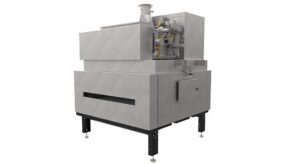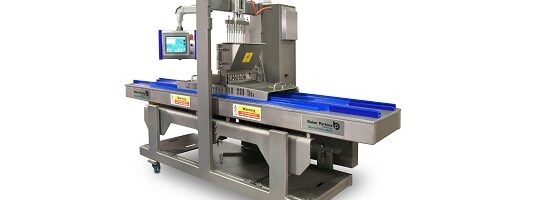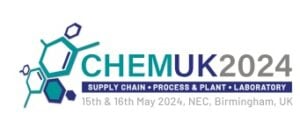
The TruBake™ is the latest generation of Baker Perkins’ direct convection oven, based on technology proven worldwide baking every type of biscuit, cookie and cracker.
Efficiency is enhanced by re-engineering the burner and fan module to create a laminar flow of air over the full width of the burner. This continues into the ducts and plenums and leads to a stable and even distribution of convection air over the full width and length of the oven band. The result is precise, consistent and predictable baking.
Baker Perkins’ direct convection ovens have long employed the principle that higher volumes of lower temperature air improve product consistency and fuel efficiency. The TruBake™ features a new higher capacity fan to ensure that the volume and velocity of air is maintained, even in the longest zones. In conjunction with a burner turndown ratio of up to 20:1, this creates a wide operating envelope, making the oven suitable for every product from soft brownies to crackers.
This new system is a further development in the progress of baking from a ‘black art’ – relying heavily on operator experience – into a science. It was validated by computer modelling using CFD (Computational Fluid Dynamics).
Hygiene is enhanced by stainless steel covers and improved access for cleaning, with full-length doors every 2.1m along the entire length of the oven on the non-control side. One inspection/access door per zone is provided on the control side. Clean out ports have been added to top and bottom plenums enabling dust and debris to be easily removed. The frame is stainless steel and no paint is used inside the oven.
The burners and fans are standard products, proven on a variety of industrial applications throughout the world. There is easy access for maintenance and spares and service are readily available.
Exploitation of the latest manufacturing technologies, particularly laser cutting and CAD, has created an oven with much more resilient tolerances, lowering the risk of uneven expansion and leakage.
The TruBake™ is a modular oven, with a central control module in each zone, linked to standard modules either side. Zone lengths can be varied to achieve the baking conditions required throughout the oven.
The TruBake™ offers a choice of process options to bake products varying from soft dough cookies to crackers. It can be supplied as part of a hybrid oven, with an initial Direct Gas Fired section to achieve high levels of radiant heat in the early stages of baking, followed by Direct Convection to dry and colour the product.
The TruBake™ itself can be specified in either Direct Convection or, optionally, Radiant mode which is used when very gentle baking of soft dough cookies and brownies is required.
Direct rather than indirect convection is the preferred method of heating. It is a more thermally efficient system as all the heat generated by the burner goes into the baking chamber and fan performance is not diminished by having to push the air past a heat exchanger.
The Radiant version includes a damper at the end of each plenum: when it is closed the oven operates in standard convection mode with all the air being blown into the baking chamber; when it is open the pressure in the plenum is reduced so convection volumes fall and radiation increases. Adjustment of the damper position enables the relative proportions of the two modes to be adjusted. Mild steel is used for the construction of the plenums to maximise radiation.
A state-of-the art control system with a single HMI panel covers the entire oven. Recipe control is included as standard so that the oven can be set up for any product at the touch of a button: only the top to bottom heat ratio damper and the Convection/Radiant damper (if fitted) need to be set manually. Operators are advised of the manual damper settings required, and an optional monitoring system raises an alarm if they are set out of range.
The extraction system has been optimised to minimise energy consumption. Air that has given up its heat to the product by either Convection or Radiation is drawn back to the burner module for reheating by the circulation fan. A proportion of this air is vented to atmosphere to remove product moisture and maintain a constant humidity level in the baking chamber. Extraction takes place prior to the burner when the circulating air is at its coolest for maximum fuel efficiency. The extraction system uses a ‘spill over’ method, precisely controlled using a motorised extraction damper. No additional extraction fans are required, contributing further to energy efficiency.







